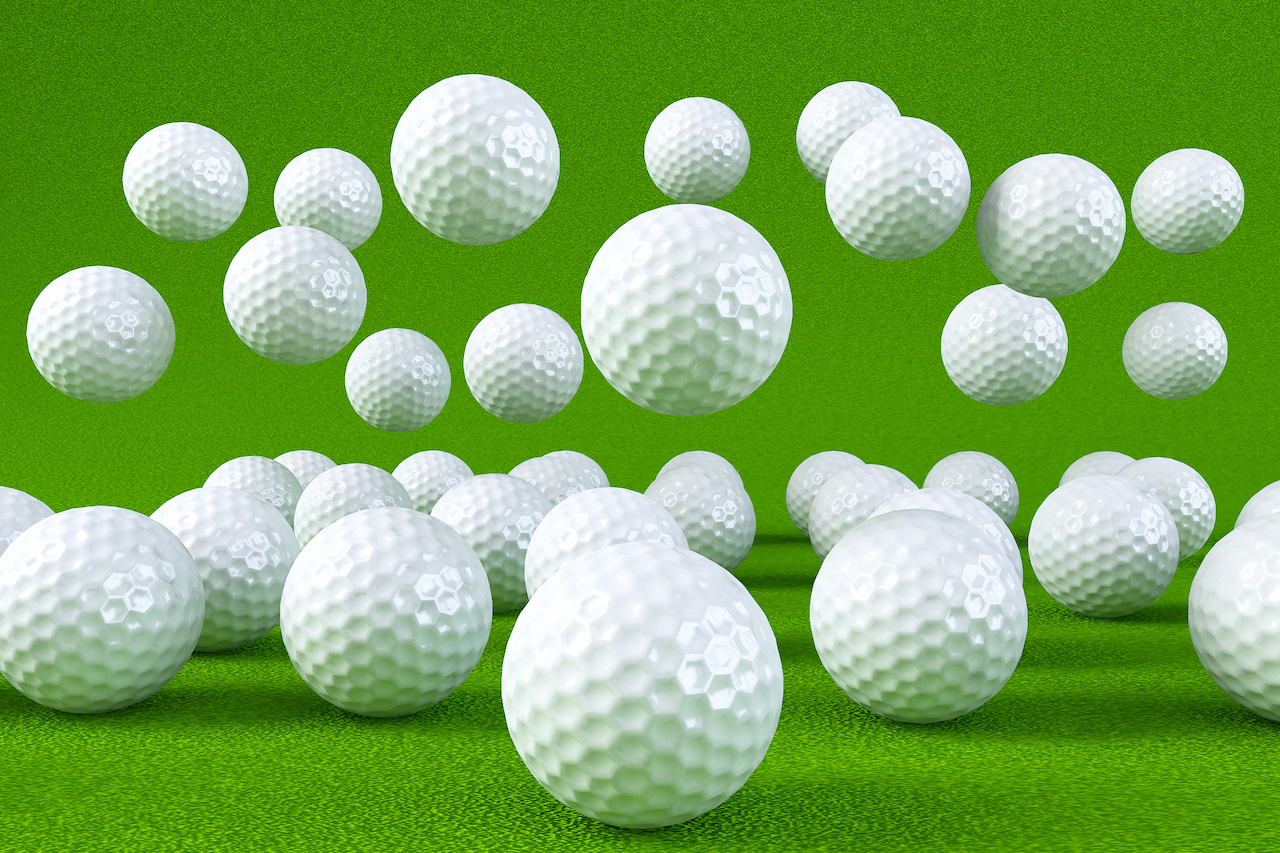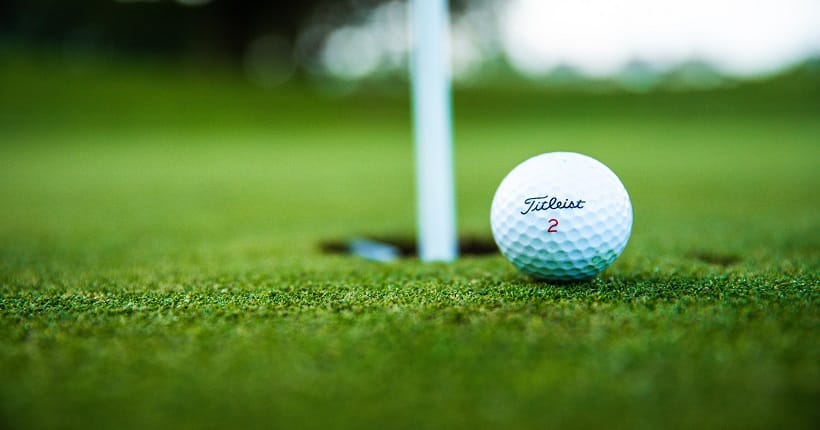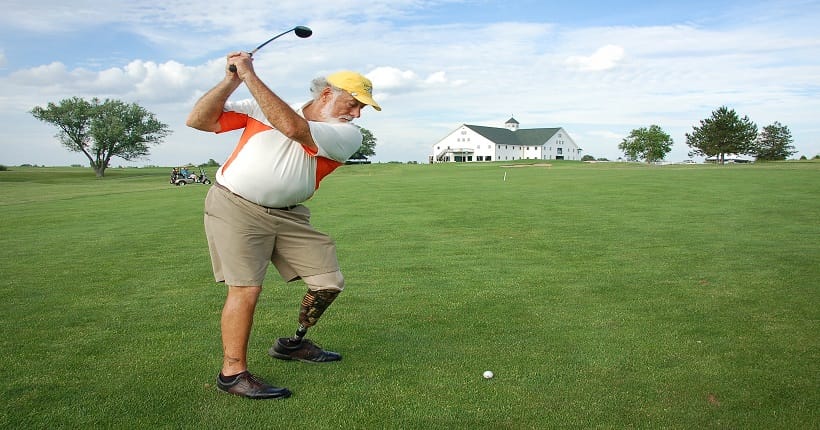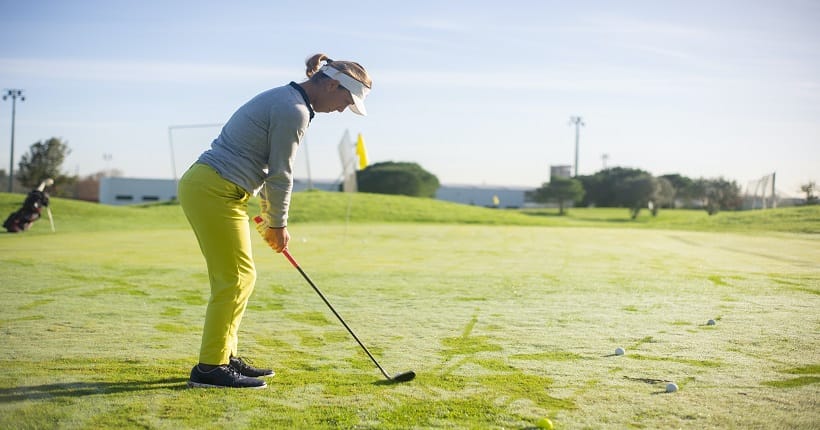How Many Dimples On A Golf Ball?
A golf ball typically has 336 to 492 dimples, depending on the brand and model. Golf balls have dimples to help reduce air resistance and increase lift, allowing them to travel further.
The number of dimples on a golf ball can vary because manufacturers experiment with different designs to optimize performance. These dimples create turbulence in the air around the ball, which helps it maintain a stable trajectory and achieve better distance and accuracy.
Golfers often seek out specific dimple patterns and sizes that suit their playing style and course conditions. The dimples on a golf ball are a crucial factor in its aerodynamics, making them a key element of golf ball design.

Credit: www.golflink.com
Why Do Golf Balls Have Dimples?
Golf balls have dimples to enhance their aerodynamic properties and increase lift, enabling them to travel longer distances. The number of dimples on a golf ball can range from 300 to over 500, with each dimple strategically designed to optimize performance.
Golf balls are not designed with dimples purely for aesthetics. In fact, these dimples play a vital role in the flight and performance of a golf ball. The dimples on a golf ball are strategically placed and scientifically designed to improve its aerodynamics and maximize its distance and accuracy.
Let’s delve into the details of how dimples affect the flight of a golf ball and the science behind them:
How Dimples Affect The Flight Of A Golf Ball:
- Reduction of drag: The dimples on a golf ball help in reducing the drag and resistance it experiences as it moves through the air. When a golf ball with a smooth surface is hit, the air flowing around it tends to create a turbulent boundary layer of air. This turbulent boundary layer increases the drag force acting on the ball, limiting its distance and accuracy. The presence of dimples disrupts the airflow, creating a thin layer of air that clings to the ball’s surface. This phenomenon, known as the Bernoulli principle, helps in minimizing drag and allows the ball to travel through the air more efficiently.
- Lift creation: The dimples on a golf ball also contribute to the generation of lift. Similar to an airplane wing, the airflow over the top of a ball is faster than the airflow underneath it due to its shape. This disparity in airflow creates a difference in air pressure, resulting in lift. The dimples play a crucial role in optimizing this lift force, helping the ball to stay in the air for a longer duration and providing greater control over the trajectory.
- Stability and trajectory control: Dimples significantly improve the stability and accuracy of a golf ball’s flight. The turbulent airflow created by the dimples helps to keep the ball on a steady path. This prevents the ball from deviating off-course due to external factors such as crosswinds. Additionally, the aerodynamic properties of the dimples allow players to impart spin on the ball, enabling them to shape shots and have better control over its trajectory.
The Science Behind Dimples And Aerodynamics:
- Boundary layer control: The dimples on a golf ball alter the behavior of the boundary layer of air that surrounds it. The turbulent boundary layer created by the dimples reduces the drag force, allowing the ball to maintain its speed and travel further.
- Turbulent flow and resistance: The dimples disrupt the smooth airflow over the golf ball’s surface, causing the boundary layer to transition from laminar flow to turbulent flow. This turbulent flow reduces the pressure drag, allowing the ball to cut through the air with less resistance.
- Airflow separation delay: Dimples play a vital role in delaying the separation of airflow from the surface of the ball. By interfering with the formation of a laminar boundary layer, the dimples ensure that the airflow remains attached to the ball’s surface for a longer duration. This delay in airflow separation helps in maintaining lift and stabilizing the ball’s flight.
The dimples on a golf ball enhance its aerodynamic properties by reducing drag, increasing lift, and providing stability and control. These small indentations make a big difference in the game, allowing golfers to achieve impressive distances and accurate shots. The science behind golf ball dimples showcases the intricate relationship between aerodynamics and performance, making them an integral part of the game.
Evolution Of Golf Ball Dimples
Golf ball dimples have evolved over time, with modern golf balls having around 300-500 dimples for better aerodynamics and ball flight. These dimples help reduce drag and increase lift, giving golfers improved distance and accuracy on the course.
Golf balls have come a long way since their early days. With technological advancements and continuous innovations, the dimple patterns on golf balls have evolved over time to enhance their performance. Let’s take a closer look at the historical development of golf ball dimples and the innovations that have shaped their design.
Historical Development Of Golf Ball Dimples
- Early golf balls: Initially, golf balls were made of wood or leather stuffed with feathers. These featherie balls had a smooth surface and didn’t possess any dimples.
- First dimples: In the mid-19th century, golfers started realizing that a ball with a rough surface could travel farther. They began experimenting by using hand-hammered dimples on their balls.
- Industrial revolution and gutta-percha balls: With the advent of the industrial revolution, the production of gutta-percha golf balls became possible. These balls featured dimples created by molding, which replaced the hand-hammered dimples.
- Wartime innovations: During World War II, rubber shortages forced manufacturers to improvise. This led to the creation of new types of golf balls, including ones with different dimple arrangements for better control and distance.
- Post-WWII advancements: After the war, manufacturers began focusing on improving golf ball aerodynamics. They experimented extensively with dimple designs to reduce drag and optimize the ball’s flight characteristics.
Innovations And Advancements In Dimple Design
- Dimple shape and depth: Golf ball dimples are no longer limited to traditional circular shapes. The surface may feature hexagonal, tetrahedral, or other geometric shapes. Varying the depth of dimples can significantly impact a ball’s lift and spin characteristics.
- Dimple patterns: Innovations in dimple patterns have resulted in optimized ball flights. Patterns such as dual-level, hexagonal, or patternless dimples aim to minimize turbulence and maximize lift, reducing drag for increased distance and better accuracy.
- Uniformity and consistency: Modern manufacturing techniques ensure that golf balls have consistent dimple shapes, sizes, and distribution across their surface. This uniformity contributes to better performance and predictable ball flights.
- Computational simulations: Today, manufacturers employ sophisticated computer simulations to model airflow over golf balls with different dimple configurations. This enables them to refine designs and create balls that excel in specific conditions.
- Optimization for different swing speeds: Golf ball dimples are now tailored to suit different swing speeds. Balls with shallower dimples are often recommended for slower swing speeds, while deeper dimples are designed for higher swing speeds.
The evolution of golf ball dimples showcases the continuous pursuit of enhancing performance and optimizing aerodynamics. From hand-hammered dimples on featherie balls to modern-day computer simulations, advancements in dimple design have transformed the game of golf and brought us closer to achieving the perfect ball flight.
How Many Dimples On A Golf Ball?
A golf ball typically has around 300 to 500 dimples, which are designed to reduce air resistance and create a more stable flight. The exact number of dimples can vary based on the brand and model of the ball.
With their unique design, golf balls have been an integral part of the sport for centuries. One intriguing aspect of these small spheres is the number of dimples covering their surface. While it may seem like a random feature, the dimple count on a golf ball actually plays a significant role in its performance.
In this section, we will explore the factors influencing the number of dimples, the typical range of dimples on modern golf balls, and the research and studies conducted on dimple count.
Factors Influencing The Number Of Dimples:
- Aerodynamics: The primary purpose of the dimples on a golf ball is to improve its aerodynamics. By creating turbulence in the airflow around the ball, the dimples reduce drag and increase lift, allowing the ball to travel farther. The number of dimples impacts the resulting airflow patterns and, thus, the ball’s flight characteristics.
- Surface coverage: The number of dimples on a golf ball is influenced by the desire to maximize surface coverage while maintaining a balance with aerodynamics. Manufacturers strive to find the optimal ratio of dimples to surface area to enhance performance.
- Manufacturing process: The manufacturing process of golf balls also plays a role in determining the number of dimples. Factors such as the type of mold used, the material of the ball, and the production techniques employed can influence the final dimple count.
Typical Range Of Dimples On Modern Golf Balls:
- The dimple count on modern golf balls typically ranges from 300 to 500 dimples. It is essential to note that the exact number of dimples can vary between different manufacturers and ball models.
- Some golf balls may have a lower dimple count, closer to the minimum range of 300, while others may feature a higher count, nearing the maximum range of 500. Manufacturers experiment with different dimple patterns and designs to achieve specific performance characteristics for their golf balls.
Research And Studies On Dimple Count:
- Extensive research and studies have been conducted over the years to understand the impact of dimple count on golf ball performance. These studies often focus on aspects such as ball flight, distance, spin control, and consistency.
- Researchers have found that the number and pattern of dimples can affect the lift, drag, and stability of the ball during flight. By analyzing various dimple configurations, scientists aim to optimize golf ball design for improved performance.
- It is important to note that while dimple count is a crucial factor, other characteristics such as ball construction, compression, and cover material also significantly influence golf ball performance.
The number of dimples on a golf ball is not arbitrary but strategically determined to enhance its aerodynamics and overall performance. Manufacturers carefully consider factors such as aerodynamics, surface coverage, and the manufacturing process when determining the dimple count. Through ongoing research and studies, golf ball designers continue to refine dimple configurations to offer golfers optimal performance, resulting in longer, straighter shots on the course.
Frequently Asked Questions For How Many Dimples On A Golf Ball?
How Many Dimples Are On A Titleist Pro V1 Golf Ball?
There are 352 dimples on a Titleist Pro V1 golf ball.
How Many Dimples Are There On The Average Golf Ball?
The average golf ball has 336 dimples. Dimples help improve the ball’s aerodynamics and distance.
What Do More Dimples On A Golf Ball Mean?
Golf balls with more dimples tend to experience less air resistance, allowing for longer and straighter shots.
How Many Dimples Does An Australian Golf Ball Have?
An Australian golf ball typically has between 330 and 400 dimples.
How Many Dimples Are On A Golf Ball?
A standard golf ball typically has around 300 to 500 dimples covering its surface.
Why Do Golf Balls Have Dimples?
The dimples on a golf ball help reduce drag and increase lift, allowing the ball to travel farther and more accurately.
Conclusion
The number of dimples on a golf ball is a fascinating topic that reveals the precision and intricacy involved in the design of these small but crucial sporting accessories. From the early days of experimenting with different numbers and patterns to the modern-day innovations utilizing advanced technology, golf ball dimples have come a long way.
The average number of dimples on a golf ball typically falls between 300 and 500, with 336 being the most common number. It’s important to note that the specific number of dimples can vary depending on the brand and model of the ball.
These dimples play a crucial role in the ball’s aerodynamics and ultimately impact its flight and distance. So, while the precise number of dimples on a golf ball may not have a definitive answer, the science and engineering behind them are undeniably impressive.
Whether you’re a professional golfer or a casual enthusiast, understanding the concept of golf ball dimples adds a deeper appreciation for the game and the equipment used.







